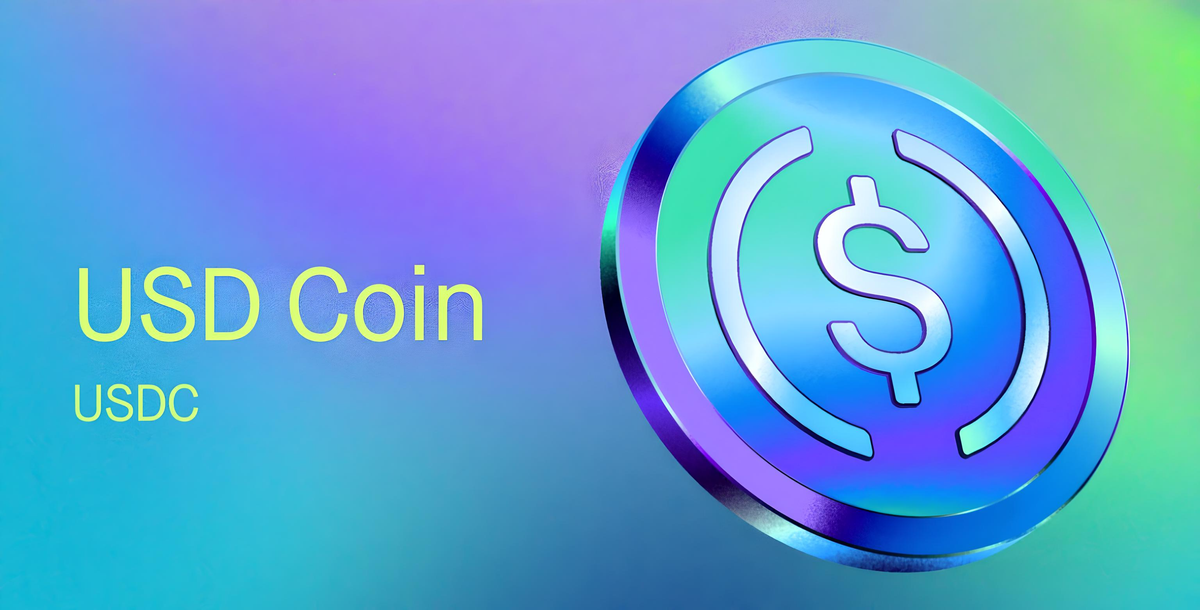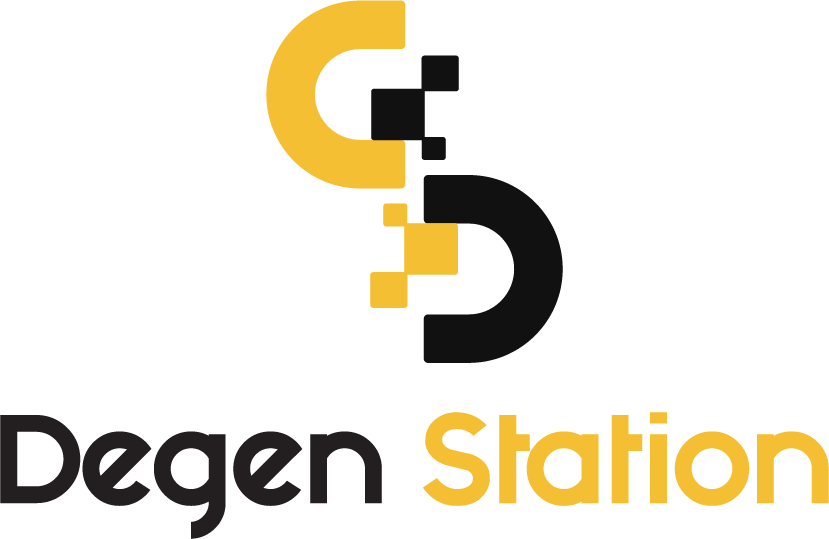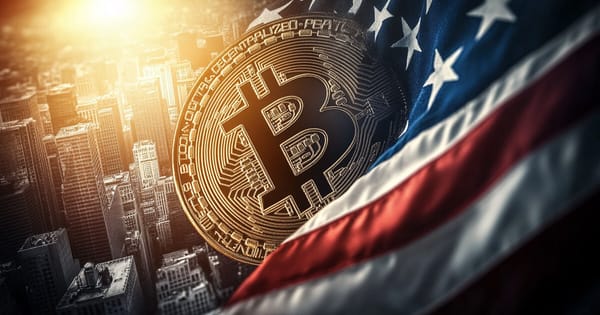USDC Stablecoin Plummets as Silicon Valley Bank Fallout Hits Hard

The USDC stablecoin has dropped below its $1 peg after issuer Circle confirmed exposure to Silicon Valley Bank.

USDC Stablecoin Plummets as Silicon Valley Bank Fallout Hits Hard
Updated at 10:25 AM on March 11, 2023:
After a period of silence and pressure from the crypto community, stablecoin issuer Circle has revealed that $3.3 billion of their reserves, or 8.25% of the $40 billion backing USDC, has been affected by the collapse of Silicon Valley Bank (SVB). This figure is significantly higher than earlier estimates.
1/ Following the confirmation at the end of today that the wires initiated on Thursday to remove balances were not yet processed, $3.3 billion of the ~$40 billion of USDC reserves remain at SVB.
— Circle (@circle) March 11, 2023
Circle stated they will continue to monitor the situation and how U.S. authorities handle asset retrieval.
Coinbase subsequently announced it would halt conversions of USDC to USD over the weekend. On Monday, when banks reopen, the exchange will resume USDC-to-USD conversions. Coinbase assured users that their assets remain safe.
Your assets remain safe & available for on-chain sends.
— Coinbase 🛡️ (@coinbase) March 11, 2023
USDC/USDT prices dropped to $0.9364 on Coinbase as investors rushed to swap from USDC to USDT amid the inability to convert directly to USD. This represents the lowest value for the stablecoin since its launch in 2018.

Price Movement of USDC/USDT on Coinbase at 10:50 AM on March 11, 2023. Source: TradingView

Price Movement of USDC Since 2019. Source: CoinGecko
Original Article:
Silicon Valley Bank's Collapse Overview
As reported by Coin68, the biggest news over the past 24 hours in both U.S. equities and the crypto market is the rapid collapse of Silicon Valley Bank (SVB), the 16th largest commercial bank in the U.S., managing over $200 billion in assets.
- Details: Silicon Valley Bank Shuts Down, U.S. Seizes Assets
Earlier this week, SVB showed signs of liquidity shortages, leading to asset fire sales and additional stock issuance attempts to raise funds, which ultimately failed. The California financial regulator and the Federal Deposit Insurance Corporation (FDIC) intervened, closing the bank and seizing its assets. The FDIC announced it would allow withdrawals for insured depositors on Monday, while uninsured depositors will have to wait for asset liquidation.
SVB's failure is the second largest commercial bank collapse in U.S. history and the most severe since the 2008 financial crisis.
Read More: What is Valley?
The full impact of this event is yet to be assessed, as the risk of a cascading effect on other large banks and individuals or businesses with funds at SVB remains. In the crypto market, there are serious concerns about companies holding funds at SVB, as it was a key service provider for tech startups and investment funds in Silicon Valley, the tech hub of the U.S.
Late on March 10 and early March 11, Binance, stablecoin issuers Paxos and Tether, and the Bybit exchange confirmed they were not affected by SVB or Silvergate Bank, a “crypto-friendly” bank that also ceased operations last week. Meanwhile, the now-bankrupt crypto firm BlockFi admitted to holding $227 million at SVB.
#Binance does not have exposure to SVB. Funds are #SAFU.
— CZ 🔶 BNB (@cz_binance) March 10, 2023
Statement from Paxos: Paxos has no relationship with Silicon Valley Bank. For further certainty, Paxos stablecoins have zero exposure to Silicon Valley Bank failure.
— Paxos (@Paxos) March 10, 2023
#tether doesn't have any exposure to SVB
— Paolo Ardoino 🤖🍐 (@paoloardoino) March 10, 2023
Bybit or our client fund does not have any exposures to either Silvergate or SVB. Please be reassured, business as usual.
— Ben Zhou (@benbybit) March 11, 2023
Circle Hit Hard by Silicon Valley Bank; USDC Experiences Worst Depeg in 3 Years
By the morning of March 11 (Vietnam time), after a period of silence, stablecoin issuer Circle—managing the second-largest stablecoin USDC with a market cap of $43.4 billion—confirmed it had stored a portion of its cash reserves at Silicon Valley Bank.
Silicon Valley Bank is one of six banking partners Circle uses for managing the ~25% portion of USDC reserves held in cash. While we await clarity on how the FDIC receivership of SVB will impact its depositors, Circle & USDC continue to operate normally.https://t.co/NU82jnajjY
— Circle (@circle) March 10, 2023
Circle’s statement read:
“Silicon Valley Bank was one of six banking partners Circle used to manage approximately 25% of the cash reserves for USDC. While we await to see how the FDIC’s takeover will impact depositors, Circle and USDC operations continue as usual.”
According to Circle's updated website, the company holds $43.5 billion in assets backing USDC, with $11.1 billion in cash. Thus, 25% of this amount is approximately $2.7 billion held across six banks, including SVB. The exact amount was not disclosed, leaving the crypto community to speculate.

USDC Reserve Information from Circle’s Website at 08:45 AM on March 11, 2023
However, some investors decided not to wait and fled from USDC. According to blockchain data tracker Nansen, Circle processed $2.3 billion in USDC redemption requests in the past 24 hours, with $1.65 billion in the last 8 hours.
Circle has burned $2.34 billion $USDC in the last 24 hours
— Nansen 🧭 (@nansen_ai) March 11, 2023
About 70% ($1.65 billion) was burned in the last 8 hours alone pic.twitter.com/qwkfYpZEN7
Simultaneously, Curve’s largest stablecoin liquidity pool, 3pool—which includes USDT, USDC, and DAI—experienced a withdrawal as investors swapped USDC for USDT, reducing USDT's share in the pool to just 3%. The USDC to USDT swap rate fell to $0.97. In the past 24 hours, 3pool’s trading volume hit $1.5 billion.

Stablecoin Ratios in Curve’s 3pool at 08:45 AM on March 11, 2023
Currently, dApps consuming the most gas on Ethereum are related to USDC swaps.
Top gas consumers on Ethereum right now.
— Alex Svanevik 🐧 (@ASvanevik) March 11, 2023
People swapping USDC like maniacs. pic.twitter.com/aM9aLXe0SP
USDC has been depegged (fallen below $1) due to these negative developments, dropping to $0.9980. This is the deepest depeg for USDC since July 2020, surpassing even crises like LUNA-UST or FTX.

USDC Price Fluctuations Over the Past Month. Source: CoinMarketCap at 08:55 AM on March 11, 2023
By the morning of March 11, Binance, the world’s largest crypto exchange, announced it would halt USDC-to-BUSD conversions “due to market conditions,” following increased deposits and pressure on stablecoin conversions.
Binance has temporarily suspended auto-conversion of USDC to BUSD due to current market conditions, specifically related to high inflows & the increasing burden to support the conversion.
— Binance (@binance) March 11, 2023
This is a normal risk-management procedural step to take while we monitor the situation.
Binance is the largest holder of USDC, with over $5 billion, followed by Crypto.com with $766 million, and various crypto project smart contracts like Uniswap, Curve, MakerDAO, Arbitrum, Polygon, Aave, Optimism, dYdX, and Compound, according to Nansen.
Ethereum $USDC on exchanges*:
— Nansen 🧭 (@nansen_ai) March 11, 2023
Binance: $5B
cryptodotcom: $766M
Uniswap: $653M
Voyager: $529M
Curve: $515M
dYdX: $368M
*CEX balance is based on the exchange addresses that we have labeled pic.twitter.com/6jkmYjH1vJ
BUSD is also experiencing a deep depeg due to recent updates from Binance, hitting $0.9873—lower than its February lows when Binance’s U.S. stablecoin was accused of being a security.

BUSD/USDT Price Chart on Binance at 09:00 AM on March 11, 2023
The largest stablecoin in the crypto market, USDT, has risen to $1.01, its highest value since August 2020, according to CoinMarketCap.

USDT Price Fluctuations Over the Past Month. Source: CoinMarketCap at 09:05 AM on March 11, 2023
Crypto investors are also turning to decentralized stablecoins. The issuance of DAI backed by USDC has surged by $736 million in the past 24 hours.
In the last 24 hours, a total net of 736 million DAI has been minted against USDC through the PSM.
— Maker (@MakerDAO) March 11, 2023
→ https://t.co/brBzEorsc1 pic.twitter.com/LagDeVBKU0
The recent interconnection between traditional finance and crypto has left many, including billionaire Elon Musk, questioning where investors can safely store value.
— Elon Musk (@elonmusk) March 11, 2023





